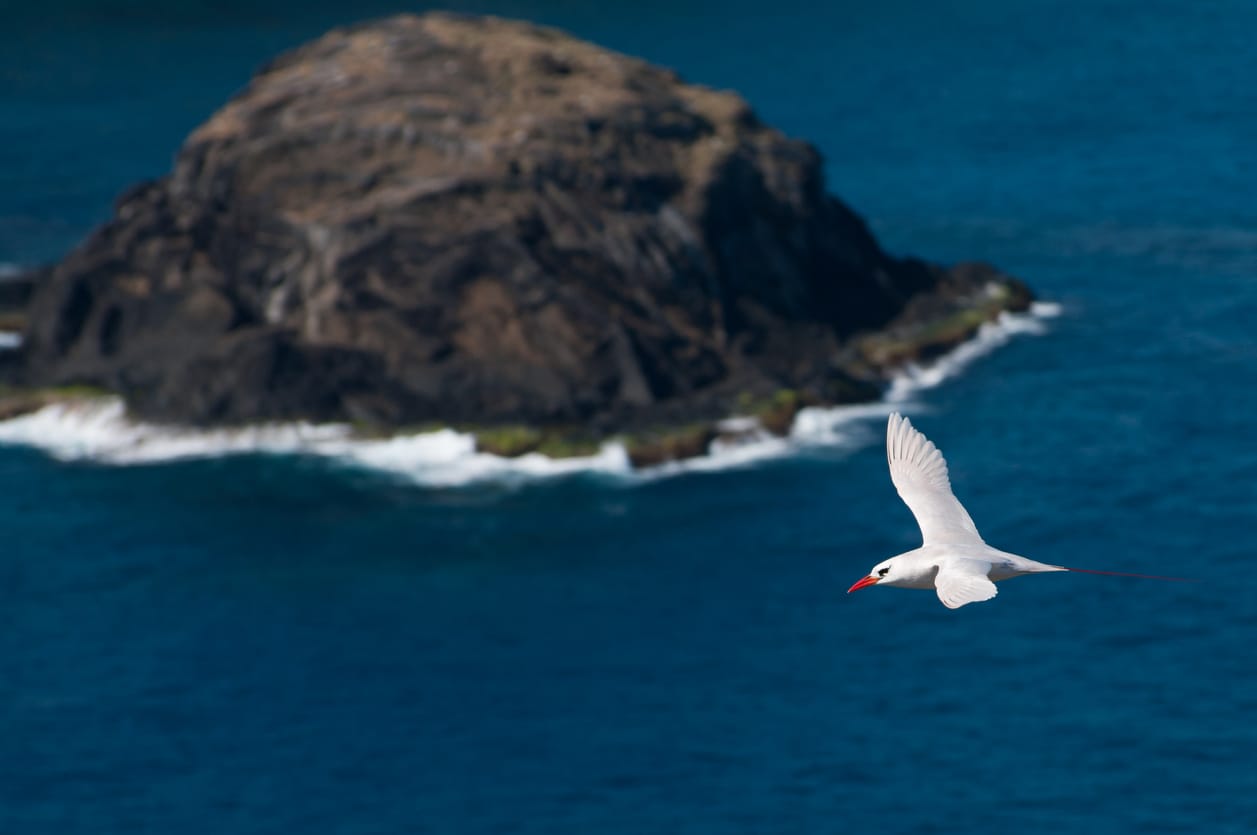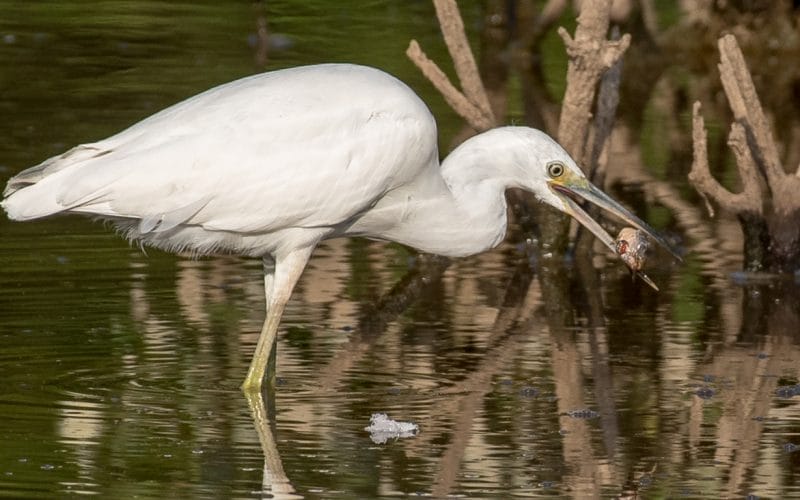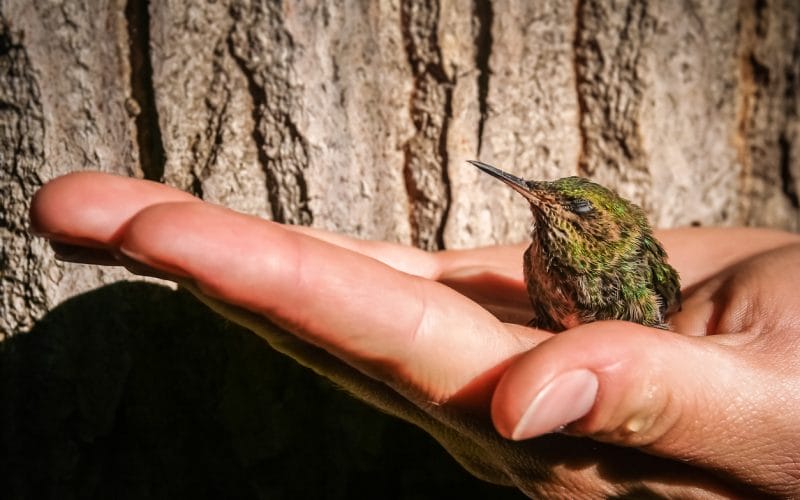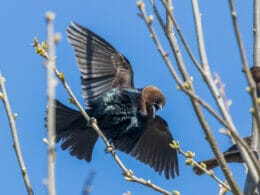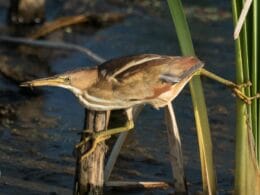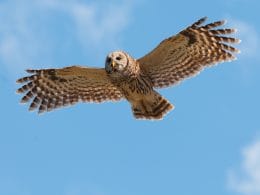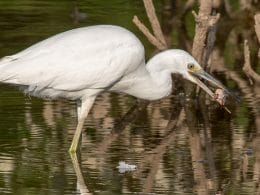Whenever there’s a sea or an ocean shore, there are almost always roaming seabirds. But what if you’re taking a trip to the Hawaiian Islands, where there’s a lot more water than land?
The result is a fascinating sight of flying birds that outnumber people. Since most of these birds have adapted to marine life, they earned the nickname seabirds.
There are over 350 different seabird species globally, which is around 3.5% of all birds. We’re going to list some of these fascinating Hawaiian seabirds, along with some exciting characteristics and facts about them.
1. Red-tailed Tropicbird

Red-tailed Tropicbirds are commonly seen in the northwestern area of Hawaii; they build their nests under shrubs or on cliffs in offshore islands. The natives call them Koa’e ula.
Both males and females are generally white, with black circles and short eye lines. Both their beaks and their tails are red.
Red-tailed Tropicbirds are good flyers, performing aerial acrobats while hunting the fish that lung over the ocean. But on land, they walk awkwardly in a shuffling manner, like a penguin.
2. White-tailed Tropicbird

Known as Koa’e Kea in Hawaii, it’s hard to distinguish between White and Red-tailed tropicbirds. They look pretty similar, except that White-Tailed tropicbirds have a white tail that’s so tall, it’s sometimes double the length of the body.
Author Note: Because they can go to impressive altitudes, they prefer to form their nests on high cliffs in the main Hawaiian islands.
White-tailed tropic birds mainly feed on fish and squids. First, they fold their wings, then they hit the water, catch their prey, and swallow it— all while still submerged!
3. Brown Booby

Also known as Sula leucogaster, Brown Boobies used to be the most common booby-type birds back in 1930. That’s until cats, and Sally Lightfoot crabs (their main threats) reduced their numbers considerably.
Both males and females look almost identical. The body is covered mainly with brown feathers, but the belly feathers are white along with the lower side of the wings.
You can tell both genders apart by noticing the color of the ring around their eyes, which is blue in males and yellow in females.
Brown Boobies like to build their nests on the ground and short cliffs.
4. Masked Booby
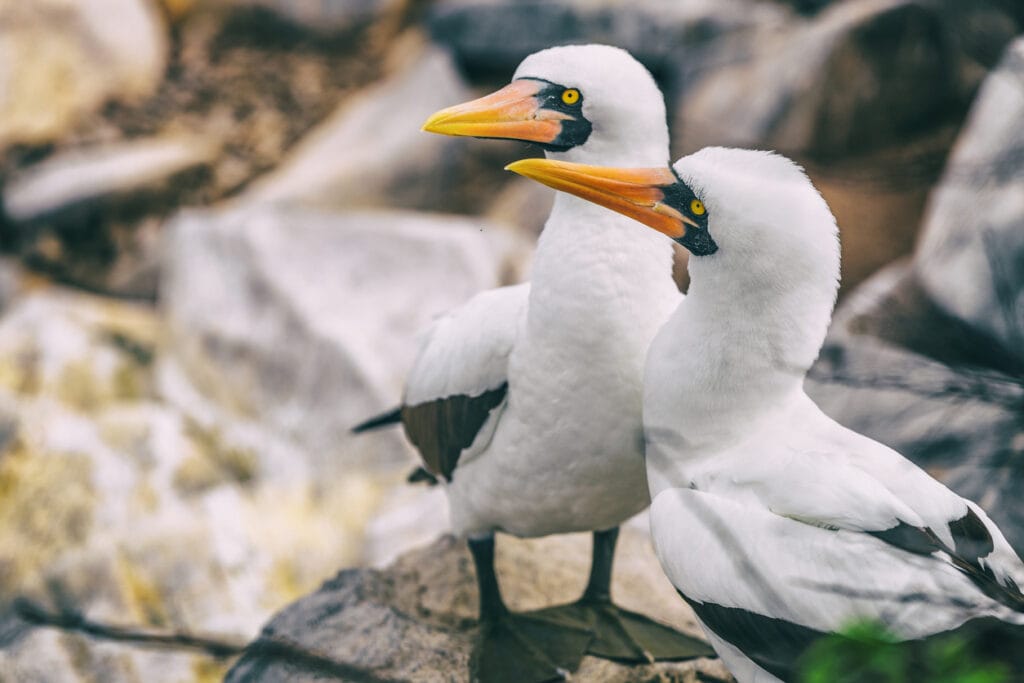
Masked Boobies or (Sula Dactylatra) are the largest booby-type birds found in most parts of the Atlantic and Pacific oceans.
An adult Masked Booby is covered entirely with white feathers, with a long yellow beak. Meanwhile, a juvenile one has brown feathers on the ends of its wings. It could take up to four years for a young Masked Booby to look like an adult.
Author Note: A female lays two eggs at a time, but one egg hatches a few days before the second. This baby Booby likes to kick the unhatched egg of his brother out of the nest!
5. Red-footed Booby

Sula Sula or the Red-footed Booby is the smallest of the booby-type birds, but it’s more than capable when it comes to flying. It can travel a whopping 90 miles in search of food.
These birds build their nests on trees. Inside the nest, you can find light brown chicks with pinkish beaks. Meanwhile, the adult birds could come in various shapes, but they mostly have white bodies with red feet, blue beaks, and black feather extensions.
Red-footed Boobies aren’t only fit for long-distance traveling but also speed. They can fly as fast as 60 miles per hour.
6. Christmas Shearwater
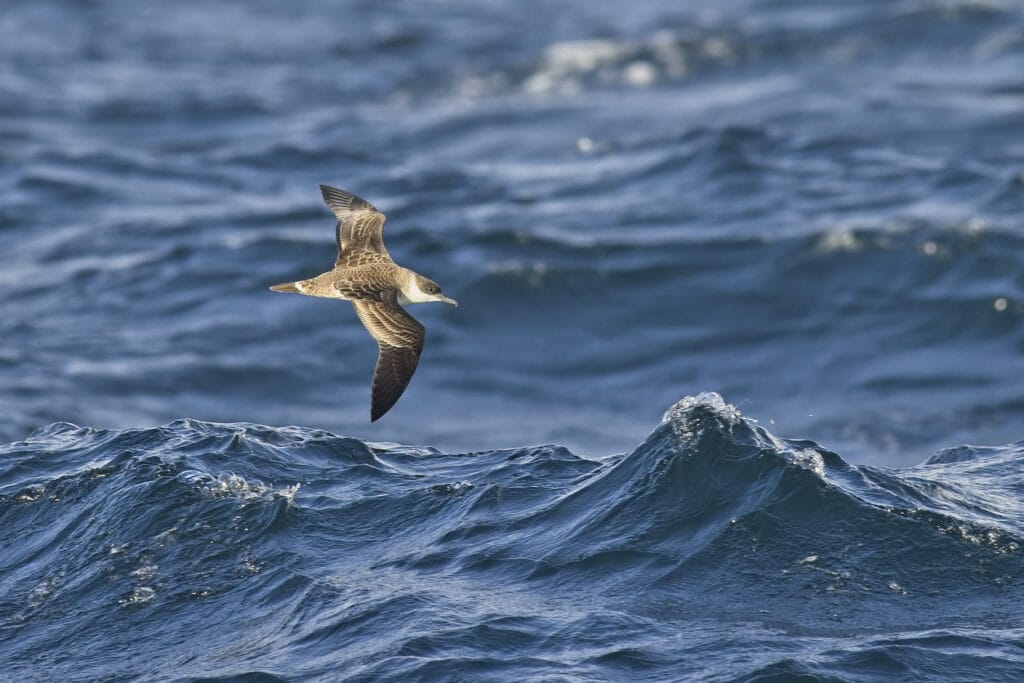
If you think the name sounds strange, wait until you hear its other name, Puffinus Nativitatis. Christmas Shearwaters got their name from the place they mainly nest in, Kiritimati Island. In Kiribati, their native language, the word Kiribati means Christmas.
These birds are chocolate-colored, with dark beaks and feet. When they open their wings, you can see their body shapes resembling torpedoes or bullets because they’re mainly divers.
They have an average flight speed of 34 miles per hour, but the way they walk on land is awkward. They take short steps while moving their necks to keep their balance.
7. Newell’s Shearwater

Another Shearwater joins the list; Newell’s Shearwater is also known as Puffinus auricularis. The Hawaiians call it ’A’o. It has a brown or black body with a white underside.
Newell’s Shearwaters breed on only one island known as Socorro Island, where many feral cats live. This is bad news for the ’A’os because these cats are their main predators.
In 1908, they were thought to be extinct until they were found again on Kauai Island in Hawaii in 1947. A study in 2008 found less than 100 breeding pairs on the Island, marking these birds as endangered species.
8. Wedge-tailed Shearwater
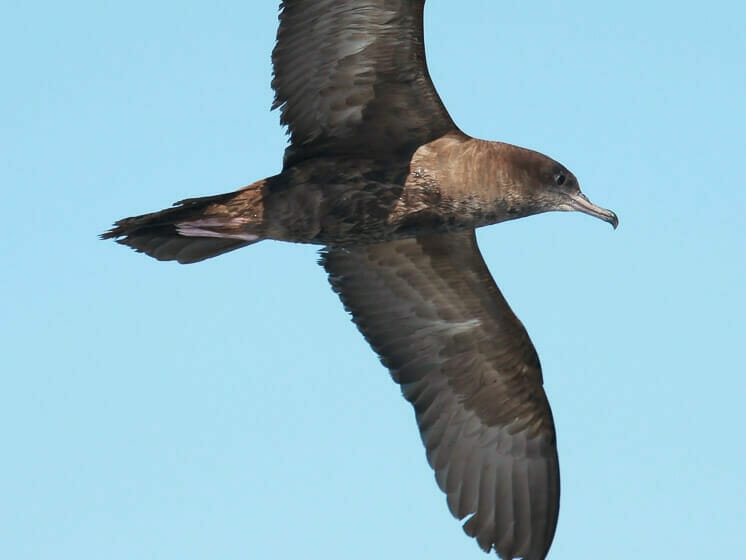
Wedge-Tailed Shearwater birds are natively named ‘Ua ‘U ‘Kani. The Hawaiians call them that because of their ghost-like wailing call at night. In their native language, ‘Ua ‘U ‘Kani means “the moaning seabird.”
Their bodies are mainly grayish with white foreheads and white undersides. They also have dark beaks and coral pink duck-like feet.
Similar to its cousins in the Shearwater family, the Wedge-tailed Shearwater can dive down to 230 feet to catch its prey!
9. Great Frigatebird

Great Frigatebirds are among the bigger Hawaiian seabirds. They have a body length of 39 inches, and when they spread their wings, their wingspan reaches 90 inches. They can also reach a top speed of 95 miles per hour.
They’re black-feathered birds. Males have a red pouch under their beaks, inflatable to attract females. The females have no red pouch; they instead have a white chest.
Top Tip: The Hawaiians call them ’Iwa, which means thief because this bird steals fish and squids from other birds.
Great Frigatebirds are so large that there are no natural predators they need to be scared of. This gives them the luxury to sleep mid-flight while keeping half their brains awake.
10. Black Noddy
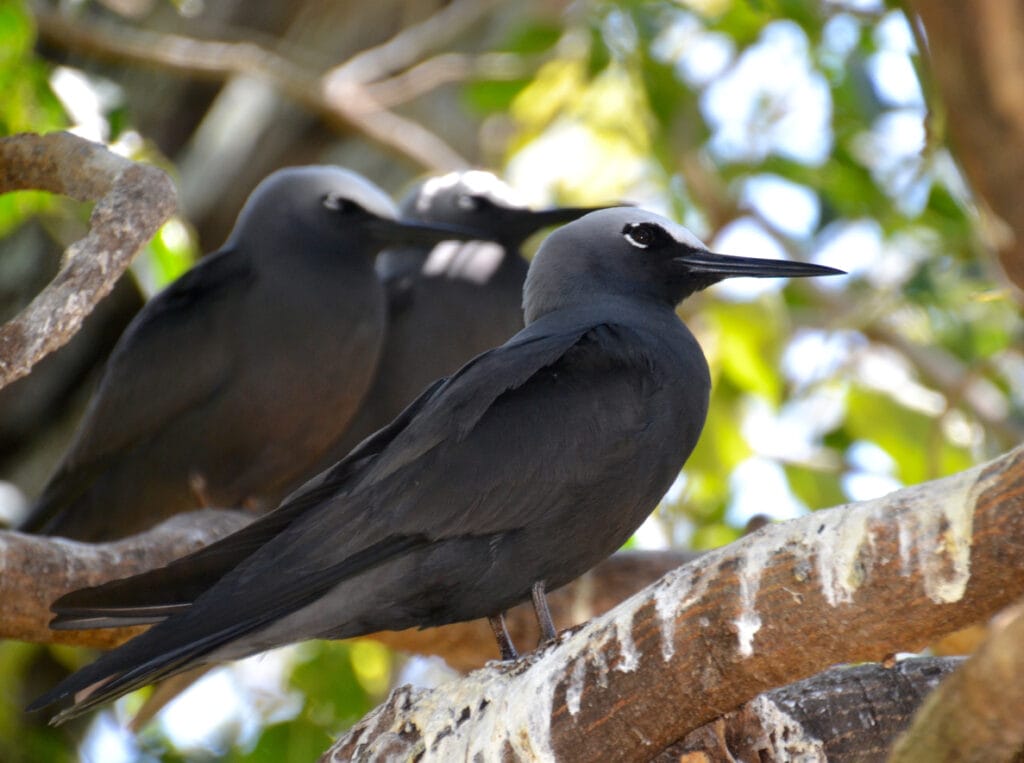
Black Noddy, or “Noio” in the native Hawaiian tongue, is a bird that you can find in large areas in both the Pacific and Atlantic Oceans. Noddies earned their names because of the nodding-like motion when both genders meet each other during courtship.
Adult Black Noddies are dark feathered sea birds with white caps and tails. However, their chicks are quite pale in comparison.
Black Noddies are very tolerant towards humans. As long as you don’t make sudden movements, you can slowly approach their nest and pick them up without having them scared.
11. Brown Noddy
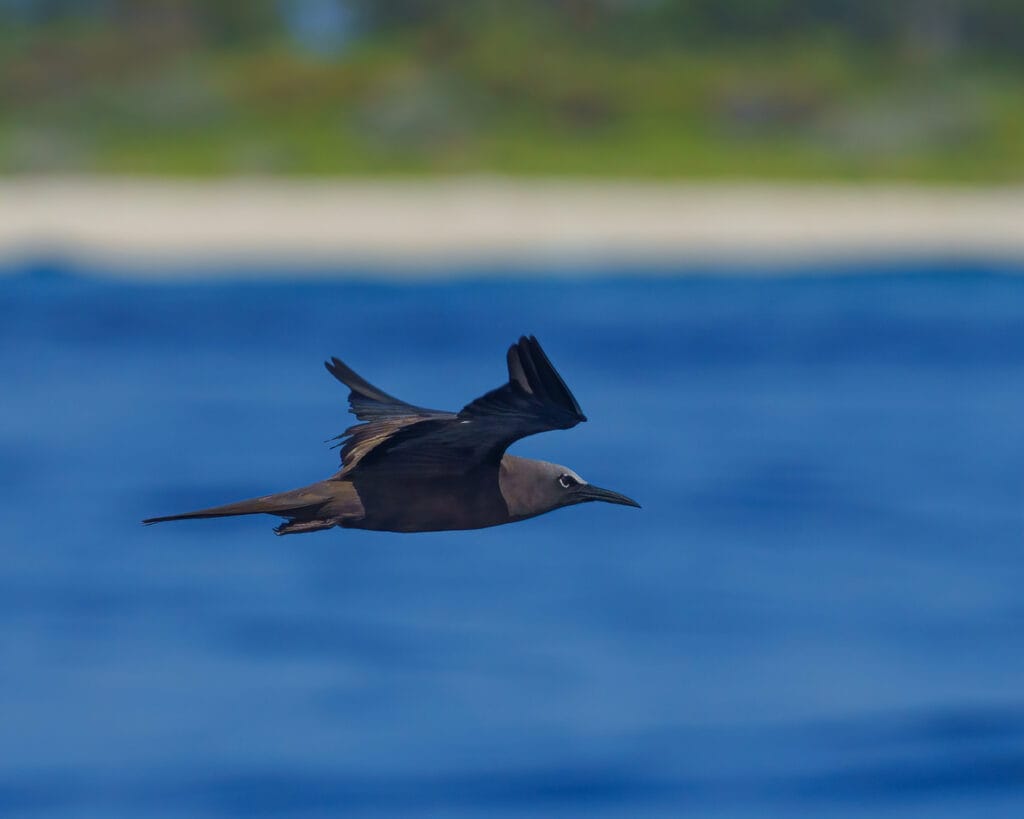
Brown Noddies are the largest of the Noddy family. They have double the weight of a black Noddy. In the native Hawaiian language, Brown Noddy means “Noio Koha.”
Compared to a Black Noddy, a Brown Noddy has lighter feathers, a bigger body, and wider tails. They still have the same white cap and duck-like legs, though.
Brown Noddy chicks reach the adult weight in just 18 days. Then, within six weeks, Brown Noddies outweigh their parents.
Brown Noddy pairs don’t forget their first breeding nest. They love to come back to the exact same nest every year.
12. Blue Noddy
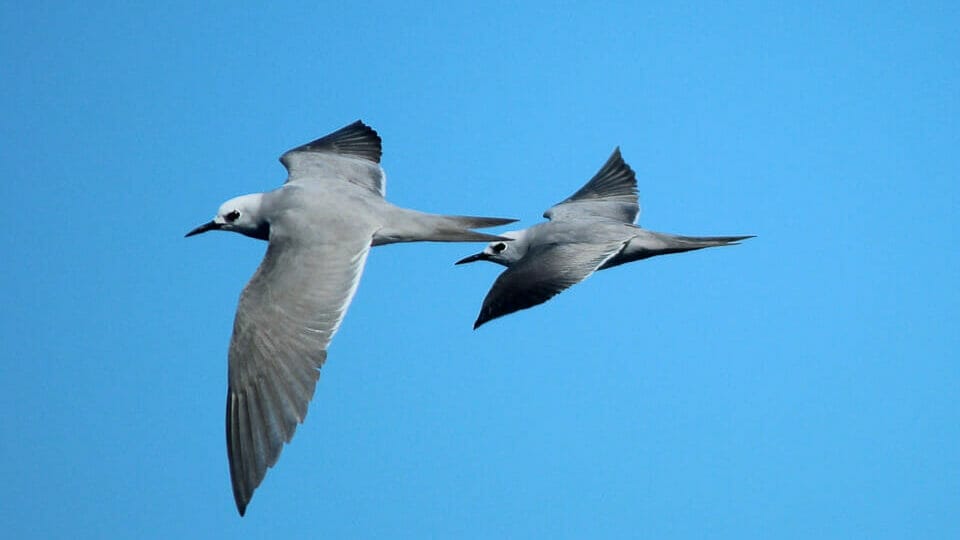
Another bird you’d find roaming the Hawaiian skies is the Blue Noddy, also called Grey Noddy. It belongs to the “tern species,” which are over 40 types of seabirds.
This little bird’s feathers could be light gray or light blue, with the color getting darker as you approach the tail. Like its fellow Noddies, it still has the white hat.
Blue Noddies have the tiniest mouth opening of their fellow tern species, so they mainly feed on small fish and crustaceans.
13. Black-footed Albatross

With brown feathers all around and white feathers around the beak, Black-footed Albatross are fascinating seabirds. They can live up to 70 years old and mate till their 60s!
These seabirds have a wingspan of around 118 inches. Their massive wings make taking off and landing a complex process, but they can glide for over 49,000 miles without touching land!
Black-footed Albatross seabirds feed on small fish, which they can locate over 12 miles away using their strong sense of smell.
They have special glands above their eyes that they use to excrete excess salt, which enables them to drink seawater without any trouble!
14. Laysan Albatross
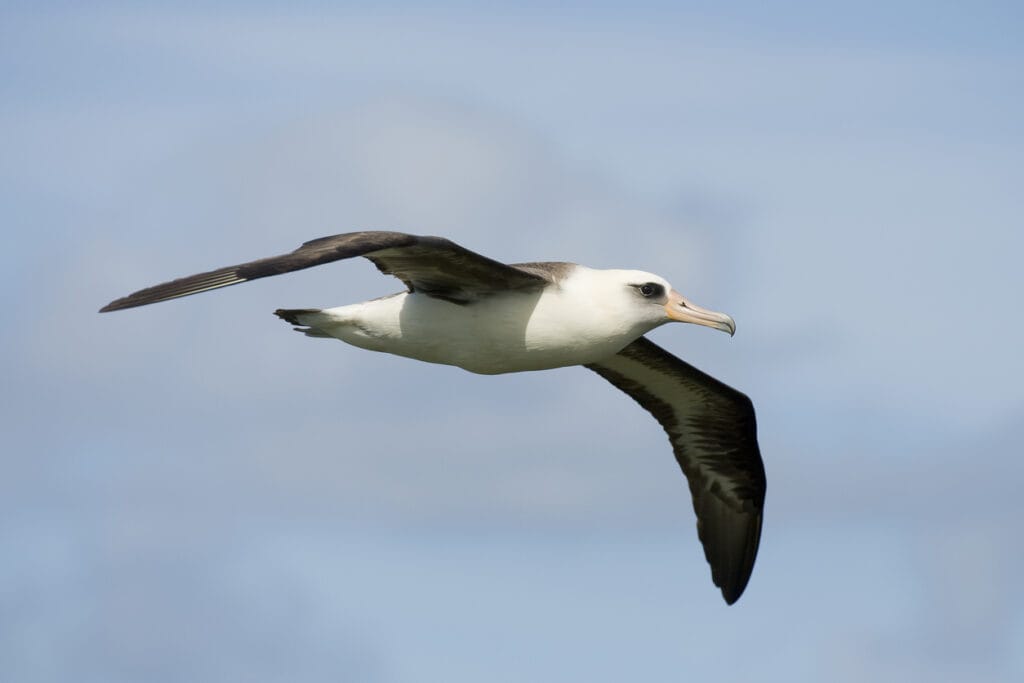
Laysan Albatross seabird got its name from Laysan Island, the second largest Island in Northwestern Hawaii. Coincidentally, it’s also the second most common seabird in the Hawaiian Islands. The natives call it Moli.
Author Note: This seabird is primarily white, with darker shades around the beak, wing, and tail extensions area. It’s a bit smaller and lives a bit shorter than its Black-Footed cousin, but it’s still an excellent glider.
That said, the bird finds difficulty taking off if there’s no wind since it relies on it to take off. In such a case, a Laysan Albatross may throw itself off a cliff to take off.
15. Short-tailed Albatross

Despite its name, the Short-tailed Albatross’ tail isn’t any shorter than its Laysan and Black-Footed cousins. But since it’s the largest of the three, its tail-to-body ratio gives the illusion of a short tail.
It looks relatively similar to a Laysan Albatross, but it has a distinctive bubble gum-colored beak with a bluish tip. This makes identifying it much easier at close distances.
Top Tip: Albatross seabirds court each other with graceful dancing moves; their big wings make this elaborate dance a sight to behold.
Currently, there are around 1900 Short-tailed Albatross seabirds alive. This doesn’t only make them a rare sight but also an endangered species.
16. Bulwer’s Petrel
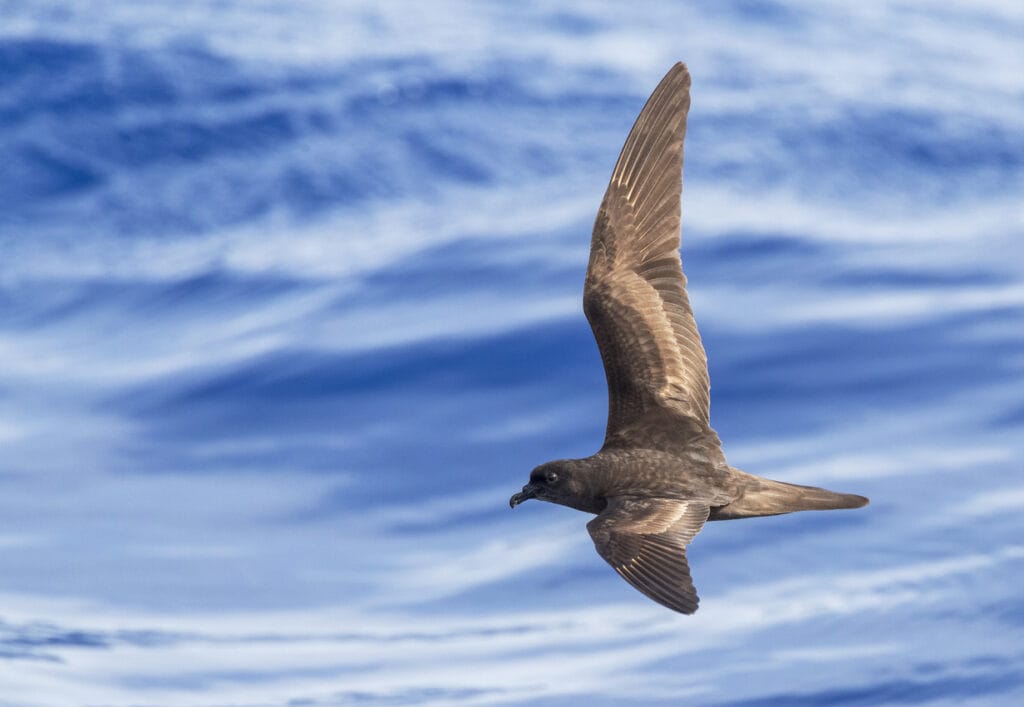
Bulwer’s Petrel is named after a Scottish naturalist whose name is James Bulwer. The Hawaiians, on the other hand, refer to it simply as ’Ou.
This pale-brown seabird has a distinctive white line across the bottom part of its wings; it also has a wedge-shaped tail, pink legs, and a dark beak.
Like most seabirds, Bulwer’s Petrel feeds on squids and small fish. However, unlike many other seabirds, it doesn’t dive. Instead, it sits on the water surface, flaps its wings, and dips its head underneath to catch its prey.
17. Bonin Petrel

Bonin Petrels are small seabirds that breed mostly on Midway and Laysan Islands. The upper surface of their bodies is covered in gray feathers, while the lower is white. They also have a wedge-shaped tail.
These seabirds mainly nest on the South Japanese Islands and Northwestern Hawaiian Islands. Since they need to cover long distances while avoiding predators, Bonin petrels aren’t only fast but quite more agile than their Petrel cousins.
The “Petrel” in their name is Latin for “Saint Peter.” These birds fly so close to the water that their legs are sometimes touching water midflight. This gives the illusion of walking on water like Saint Peter.
18. Hawaiian Petrel

Hawaiian Petrels breed only in the major Hawaiian Islands, which is one of the reasons why this seabird is a rare sight. Currently, there are around 60 mating pairs. The natives call them ’Ua ’U.
These seabirds have a brown coverage on top, white bellies, and white foreheads. They have a special call during their breeding season, which sounds something like ooo waa ooo.
Every November, young Hawaiian Petrels leave the nest for the first time and fly towards the ocean in search of food. Because their navigation isn’t well developed yet, they crash into lighthouses and other man-made objects.
Once they slam into something, they either fall in the water and drown or on the ground. Once grounded, it’s very difficult for a ’Ua ’U to fly again. This makes it prey to cats and other mammals.
Because of this, these birds are currently in danger of extinction. If you recognize a confused Hawaiian Petrel baby on the ground, lift it up in the air to help it fly again.
A Few Tips to Protect Hawaiian Seabirds
It’s important to avoid tampering with marine life in Hawaii. If you decide to have your vacation there, or if you live there, there are a few things you should be aware of to help marine life.
Keep Your Pets Under Control
If you own a dog or a cat, always keep them indoors or train them not to hunt birds. Cats especially love to hunt down birds and kill them. You don’t want your cat endangering a rare bird.
No Artificial Lights
Switch off any unnecessary lights, especially around bird nesting areas. Birds get blinded easily, and they may collide with objects or get trapped in a moment of confusion.
No Plastic
Plastic floats on water and kills hundreds of seabirds every year who mistake it for food. Avoid plastic products as much as possible, and if you do have to use them, dispose of them correctly.
Conclusion
Many other seabirds roam the skies and seas of Hawaii. They’re majestic, elegant, and they add a great atmosphere to the environment.
However, many of them are also endangered for many reasons. Try not to catch a sea bird or get closer to it than you should. Also, avoid throwing any trash on the beaches; seabirds might confuse them for food and ingest them.
FAQ
The Wedge-tailed Shearwater can be seen in abundance around the islands of Hawaii.
There are so many birds that are endemic to Hawaii, which makes it a great place for birders to visit. Probably the best seabird to see here is the Laysan Albatross which breeds on the islands of Hawaii.
The Nene is the official bird of Hawaii. This goose can only be found here (well, in the wild anyway). Not strictly a seabird but very cool nonetheless.




